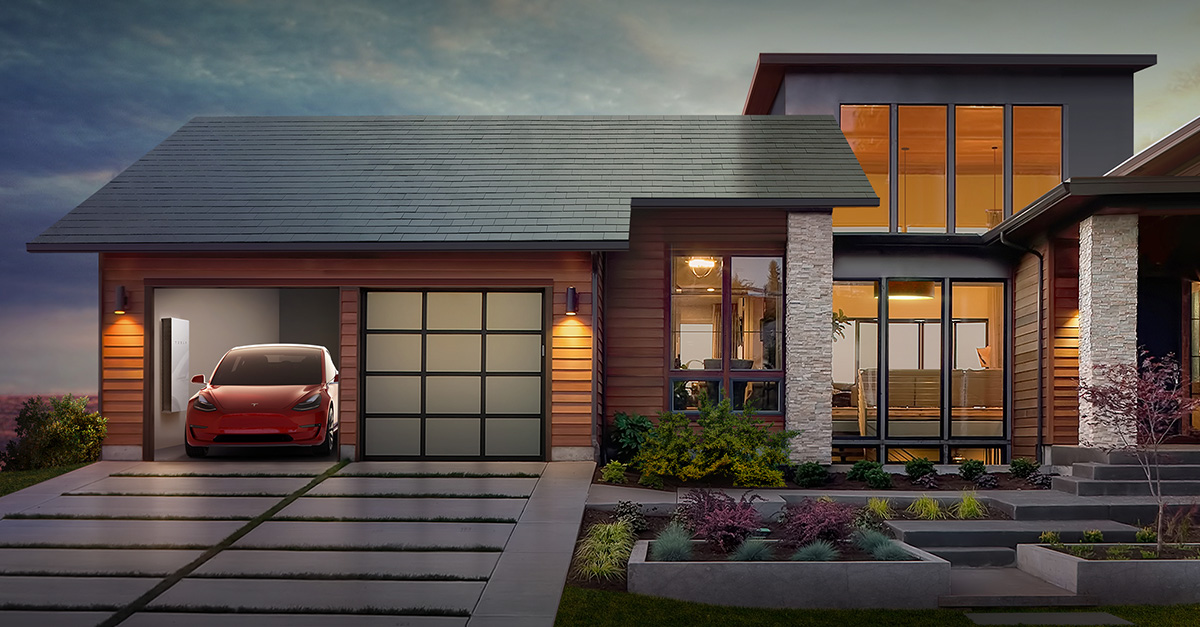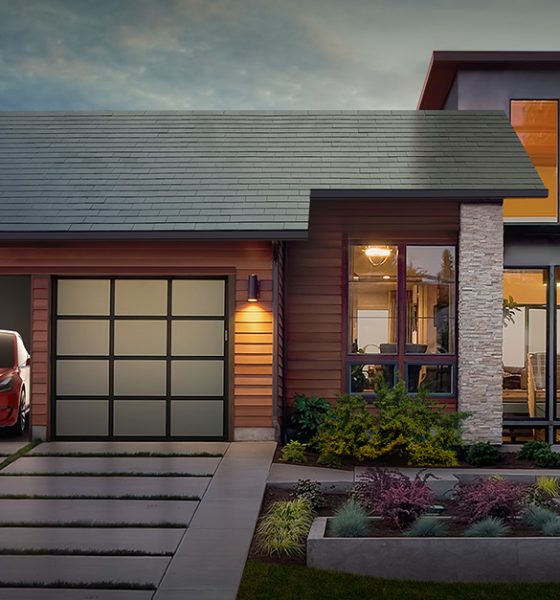Elon Musk has indicated that Tesla will be utilizing WiFi integration to assist drivers in opening their smart garage doors. Automatic garage door opening is available through Homelink. However, some garage doors are not compatible with Homelink and instead use an internet connection through WiFi to operate. The newly requested feature from a Twitter follower of Musk would use the internet instead of Homelink’s radio frequency-based software.
Ryan Knapp, a follower of Musk on Twitter, asked if the CEO could add an icon for a WiFi garage door opening feature to Tesla’s infotainment system. This would allow owners to enter their garages using the internet, even without the use of Homelink. “Elon, any way we could get a WiFi garage door opening icon. For users that do not have Homelink and do have a WiFi enable garage door, this would be a very useful feature,” Knapp asked Musk, who clarified that the feature is coming soon.
Homelink can control up to three devices, like gates, lights, garage doors, and security systems. It operates on radio frequencies and not an internet connection, which allows for the automatic opening or powering up of these systems.
Coming soon
— Elon Musk (@elonmusk) April 7, 2020
Currently, Homelink is available for use with 99% of garage door openers, according to its website. The feature is easily programmed with any of Tesla’s vehicles. However, if a garage door opener is not compatible with Homelink, then other non-integrated options must be used. WiFi capable garage doors are one of the available alternatives.
While WiFi capable garage openers are convenient, many of them require a smartphone application for correct and valid operation. The use of a cell phone can be distracting and is not as convenient as Homelink, which has an “Auto-Open” feature that can be set to a varying number of distances.
The new WiFi integrated opening system also alleviates the need to carry bulky garage door openers that can be lost or stolen, or even the need to pull out a smartphone to open the garage door. There are instances where this could be troublesome, especially if the phone runs out of batteries, and charging options are not available within a vehicle.
The integration of WiFi garage door opening capabilities in a Tesla could make life easier for drivers. Some owners already have garage door openers installed that utilize WiFi but are not Homelink compatible. This feature will give those owners the ease of access to open their garages without having to invest in a new, Homelink-compatible system.
Elon Musk’s idea of a “smart home” development was reiterated in late March, as the CEO stated he would love to develop a home HVAC system that uses HEPA filters for clean air and quiet and efficient technologies to reduce energy usage. The development of the WiFi-based garage door opener could add to the Smart Home idea, as it would allow more owners of the company’s vehicles to enter automatic garages without having to change to systems that are compatible with Homelink.
Once again, the advantages of Tesla’s Over-the-Air updates are evident, as improvements that real owners want to see can be easily installed on the company’s vehicle, most of the time at no cost.

News
Tesla China quietly posts Robotaxi-related job listing
Tesla China is currently seeking a Low Voltage Electrical Engineer to work on circuit board design for the company’s autonomous vehicles.

Tesla has posted a new job listing in Shanghai explicitly tied to its Robotaxi program, fueling speculation that the company is preparing to launch its dedicated autonomous ride-hailing service in China.
As noted in the listing, Tesla China is currently seeking a Low Voltage Electrical Engineer to work on circuit board design for the company’s autonomous vehicles.
Robotaxi-specific role
The listing, which was shared on social media platform X by industry watcher @tslaming, suggested that Tesla China is looking to fill the role urgently. The job listing itself specifically mentions that the person hired for the role will be working on the Low Voltage Hardware team, which would design the circuit boards that would serve as the nervous system of the Robotaxi.
Key tasks for the role, as indicated in the job listing, include collaboration with PCB layout, firmware, mechanical, program management, and validation teams, among other responsibilities. The role is based in Shanghai.
China Robotaxi launch
China represents a massive potential market for robotaxis, with its dense urban centers and supportive policies in select cities. Tesla has limited permission to roll out FSD in the country, though despite this, its vehicles have been hailed as among the best in the market when it comes to autonomous features. So far, at least, it appears that China supports Tesla’s FSD and Robotaxi rollout.
This was hinted at in November, when Tesla brought the Cybercab to the 8th China International Import Expo (CIIE) in Shanghai, marking the first time that the autonomous two-seater was brought to the Asia-Pacific region. The vehicle, despite not having a release date in China, received a significant amount of interest among the event’s attendees.
Elon Musk
Elon Musk and Tesla AI Director share insights after empty driver seat Robotaxi rides
The executives’ unoccupied tests hint at the rapid progress of Tesla’s unsupervised Robotaxi efforts.

Tesla CEO Elon Musk and AI Director Ashok Elluswamy celebrated Christmas Eve by sharing personal experiences with Robotaxi vehicles that had no safety monitor or occupant in the driver’s seat. Musk described the system’s “perfect driving” around Austin, while Elluswamy posted video from the back seat, calling it “an amazing experience.”
The executives’ unoccupied tests hint at the rapid progress of Tesla’s unsupervised Robotaxi efforts.
Elon and Ashok’s firsthand Robotaxi insights
Prior to Musk and the Tesla AI Director’s posts, sightings of unmanned Teslas navigating public roads were widely shared on social media. One such vehicle was spotted in Austin, Texas, which Elon Musk acknowleged by stating that “Testing is underway with no occupants in the car.”
Based on his Christmas Eve post, Musk seemed to have tested an unmanned Tesla himself. “A Tesla with no safety monitor in the car and me sitting in the passenger seat took me all around Austin on Sunday with perfect driving,” Musk wrote in his post.
Elluswamy responded with a 2-minute video showing himself in the rear of an unmanned Tesla. The video featured the vehicle’s empty front seats, as well as its smooth handling through real-world traffic. He captioned his video with the words, “It’s an amazing experience!”
Towards Unsupervised operations
During an xAI Hackathon earlier this month, Elon Musk mentioned that Tesla owed be removing Safety Monitors from its Robotaxis in Austin in just three weeks. “Unsupervised is pretty much solved at this point. So there will be Tesla Robotaxis operating in Austin with no one in them. Not even anyone in the passenger seat in about three weeks,” he said. Musk echoed similar estimates at the 2025 Annual Shareholder Meeting and the Q3 2025 earnings call.
Considering the insights that were posted Musk and Elluswamy, it does appear that Tesla is working hard towards operating its Robotaxis with no safety monitors. This is quite impressive considering that the service was launched just earlier this year.
Elon Musk
Starlink passes 9 million active customers just weeks after hitting 8 million
The milestone highlights the accelerating growth of Starlink, which has now been adding over 20,000 new users per day.

SpaceX’s Starlink satellite internet service has continued its rapid global expansion, surpassing 9 million active customers just weeks after crossing the 8 million mark.
The milestone highlights the accelerating growth of Starlink, which has now been adding over 20,000 new users per day.
9 million customers
In a post on X, SpaceX stated that Starlink now serves over 9 million active users across 155 countries, territories, and markets. The company reached 8 million customers in early November, meaning it added roughly 1 million subscribers in under seven weeks, or about 21,275 new users on average per day.
“Starlink is connecting more than 9M active customers with high-speed internet across 155 countries, territories, and many other markets,” Starlink wrote in a post on its official X account. SpaceX President Gwynne Shotwell also celebrated the milestone on X. “A huge thank you to all of our customers and congrats to the Starlink team for such an incredible product,” she wrote.
That growth rate reflects both rising demand for broadband in underserved regions and Starlink’s expanding satellite constellation, which now includes more than 9,000 low-Earth-orbit satellites designed to deliver high-speed, low-latency internet worldwide.
Starlink’s momentum
Starlink’s momentum has been building up. SpaceX reported 4.6 million Starlink customers in December 2024, followed by 7 million by August 2025, and 8 million customers in November. Independent data also suggests Starlink usage is rising sharply, with Cloudflare reporting that global web traffic from Starlink users more than doubled in 2025, as noted in an Insider report.
Starlink’s momentum is increasingly tied to SpaceX’s broader financial outlook. Elon Musk has said the satellite network is “by far” the company’s largest revenue driver, and reports suggest SpaceX may be positioning itself for an initial public offering as soon as next year, with valuations estimated as high as $1.5 trillion. Musk has also suggested in the past that Starlink could have its own IPO in the future.










